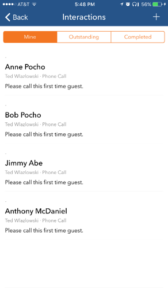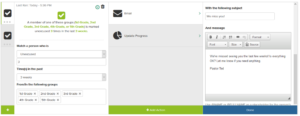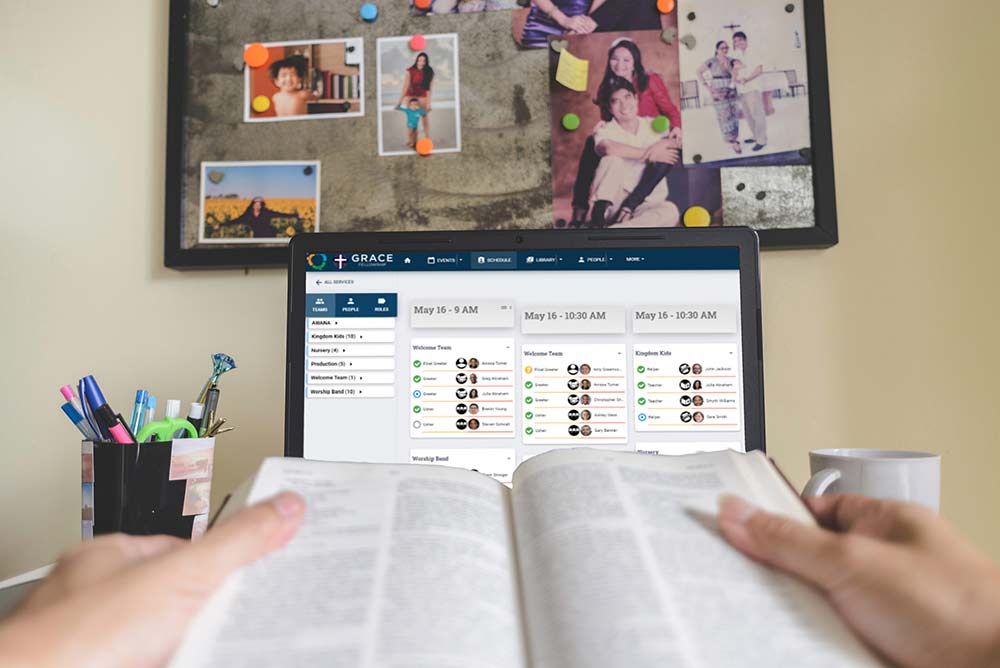Pastors often ask us (and themselves), “How do I know my people are connecting?” Great question! It’s actually one that can be taken a couple different ways. The first one is: are people forming relationships? The other is: are people taking steps to participate more deeply in the church? Both are important, and not surprisingly, they’re also related.
Here are some principles that can help your congregation do better at both.
Be Welcoming…Not Weird
“Hey brother! How’re you?” paired with a back slap might be an awkward overly zealous greeting for a first time guest at your church. On the other hand, sometimes churches feel like they’re not really sure what to do when someone new visits and they wind up gawking at and ignoring newcomers. The solution to both of these problems is the same—just be appropriately friendly! “Hi, welcome!” and a polite handshake are more than enough to convey a genuine, warm greeting.
The most crucial step for the church is capturing contact information that guests feel comfortable sharing. Child check-in is often the best opportunity to gather as much data as possible. It’s hard to follow-up with guests without email addresses and phone numbers!
The back-slapper and gawker have corresponding follow-up styles too. For most people showing up at their house Sunday afternoon can be intrusive. Likewise, doing nothing is not OK either. For a first time guest an email or text that day and a call from a pastor in a day or two to say, “Thanks for coming!” is just right. Tools like FellowshipOne Go’s Interactions let staff assign, complete, and track follow-up activities—even via a mobile app.
Make the Next Step Obvious
In the book 7 Practices of Effective Ministry Andy Stanley et al. encourage church leaders to “think steps, not programs.” This means thinking ahead and developing a system to help people go from new guest to connected member. When presented too many options, people suffer from a condition known as analysis paralysis. You have to answer the question, “What one step is the next thing we want a new guest to take?” Put all of your communication effort with that person into taking that next step. A step-based approach to connection might look like this:
Many times church leaders are quick to push back on this type of simple, linear process. “People connect differently! We can’t limit options.” The reality is you already limit options: you do not have infinite ministries or groups. You have made choices based on the priorities of your church. Similarly, everyone can’t do everything! It may not be necessary to cut certain programs or ministries, but help people logically tackle their involvement one phase at a time. After membership, what kind of small group do you want to join, and then, what kind of serving opportunity will you pursue? When you narrow people’s focus, they are more likely to make a choice and move.
Connection is Ongoing
Connecting is not a one and done process. It’s an ongoing focus to make sure that your congregants are engaged in three crucial ways outlined in the graphic above. Disconnected attendees are likely to leave your church within 18 months, no matter how amazing and inspiring your worship services are. It’s important that people attend service regularly, participate in a group, and serve with other church members. Each of these relational dynamics is different and lends to an overall sense of belonging. Worship services help people feel like they belong to a larger community. Small groups are a place to learn and connect. Serving opportunities are a way to meet the needs of others and give a sense of meaning and purpose. Meeting those three objectives will have your congregants remain engaged for the long haul.
Have a Retention Plan
Do you have a way to tell if people in your church are disconnecting? What are the signs? Monitoring attendance and participation in the three areas discussed above is a fundamental way to measure engagement. Technology can be a big help monitoring participation and help you intervene if needed when attendance drops off. Workflows in FellowshipOne Go are a great way to automate notifications and even take communication action like sending an email or text to a person who has missed a few weeks in a row.
Contact us if you’d like to learn more about how Interactions and Workflows can help your church connect and retain more people!
To see this ChMS tool in action, make plans to attend one of our FREE upcoming webinars. Click here to register.







